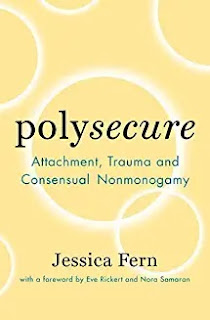What Polyamory Can Teach Us About Secure Attachment (berkeley.edu)
The Ethical Slut, Third Edition: A Practical Guide to Polyamory, Open Relationships, and Other Freedoms in Sex and Love
Some Downloads
Conor & Brittany
10 Tips on How to Be Polyamorous - Conor and Brittany - Conor McMillen & Brittany Taylor
Self Leadership Coaching with Conor McMillen
All Parts are Welcome (allpartswelcome.blogspot.com)
Polyamorous Configurations:
A vee relationship involves one person who is dating two people who are not romantically or sexually involved with each other.
For example: Daphne is dating Friedrich and Simon, but Friedrich and Simon are not dating each other. So if you drew a line from Friedrich to Daphne to Simon, it’d form a V shape.
A triad, or throuple, is a relationship between three partners who are all romantically or sexually involved with each other.
If you drew a line between Daphne, Friedrich, and Simon, it’d be a triangle, since now they’re all connected. Where was this lesson in trigonometry? SOHCAHTOA can’t help you now.
A quad is a relationship between four partners who are romantically or sexually connected with each other. This could be two primary couples connecting or adding another partner to a triad.
4. Hierarchical Polyamory
A hierarchical polyamorous relationship places more importance on one relationship over other relationships in the polycule. A primary partner is often the person that they are married to, share finances with, or lives with. Primary partners will prioritize each other when making decisions and commitments.
5. Non-hierarchical Polyamory
A hierarchical relationship does not prioritize any of the members of the relationship over the others. Each person’s relationship with each other will still be unique, but none are prioritized over the others. Everyone in the relationship works together to make big decisions.
6. Solo Polyamory
In solo polyamory, or sopo, you’re your own primary partner. A solo polyamorist prioritizes their own needs and isn’t obligated to their partners when making decisions.
They may want to be a free agent for life, or they may be prioritizing themselves during a time when it’s difficult to prioritize relationships, such as raising children or focusing on their career.
7. Kitchen Table Polyamory
Kitchen table polyamory focuses on the family vibes in the polycule. All members get together for family gatherings and provide communal support.
Everyone may not be sexually or romantically involved with each other, but they are all comfortable to hang out and support each other.
8. Parallel Polyamory
In contrast to kitchen table polyamory, parallel polyamory is when the members aren’t interested in being emotionally involved with other polycule members outside of their own partner(s).
9. Mono-poly Relationships
Mono-poly relationship are relationships in which one partner identifies as polyamorous and the other identifies as monogamous. The polyamorous partner is interested in other relationships outside of the primary partnership, but the monogamous person isn’t. The monogamous partner may just not be interested in other partners, have a mismatch in libido, or not have the time or energy for other partners."
Madison Higgins Hwang





.png)










